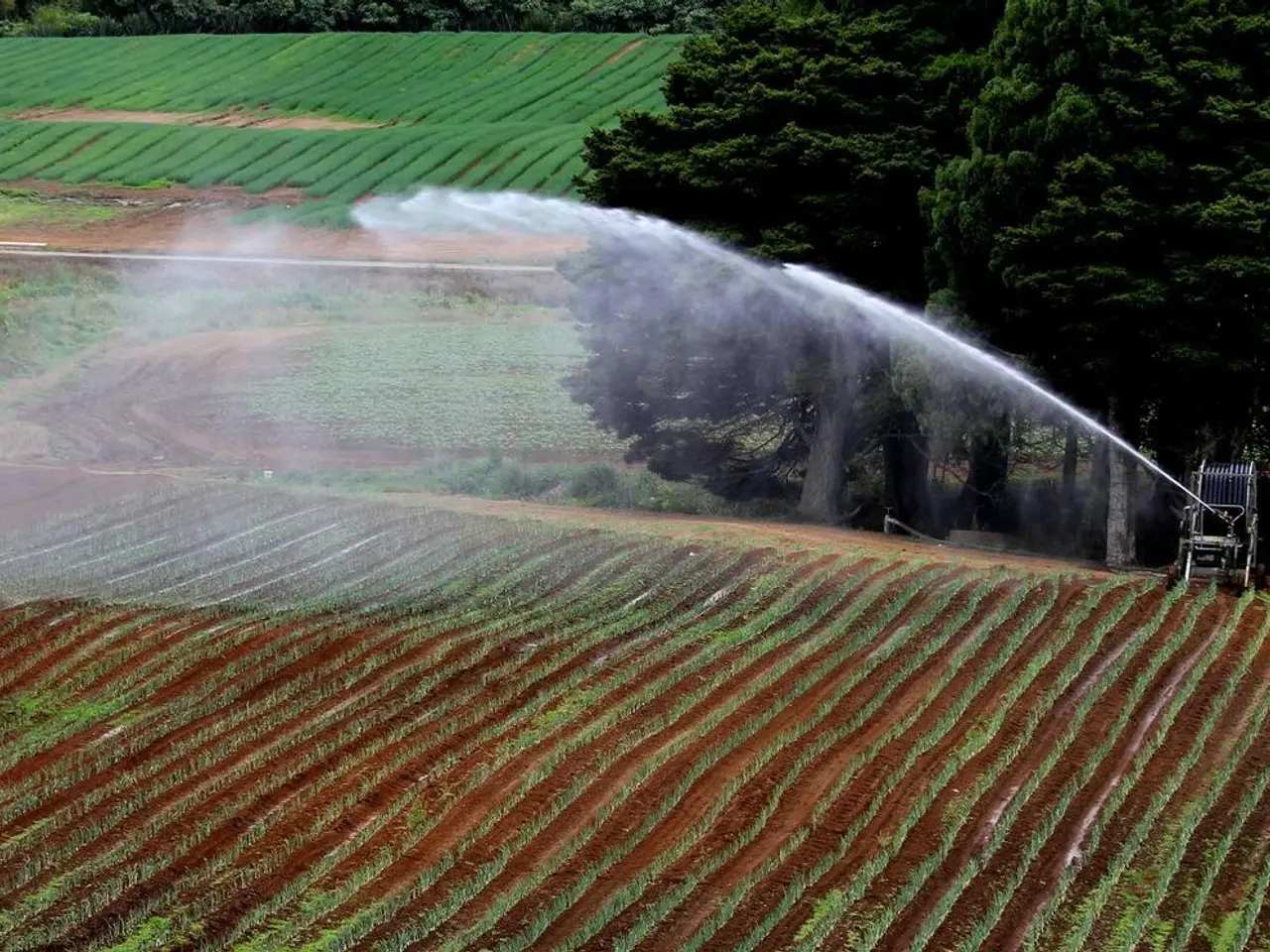Creative Approaches for Efficient Water Usage in Agriculture
In the face of increasing water scarcity, the need for sustainable agriculture practices in dry climates has never been more pressing. Effective water conservation strategies can not only conserve water but also improve crop yields, maintain soil fertility, and reduce environmental degradation.
One such strategy is the use of drip irrigation. This method delivers water slowly and directly to the plant roots, reducing water loss from evaporation and runoff, and improving water use efficiency by up to 50% compared to conventional methods. Soil moisture management, another crucial practice, involves monitoring the water content in soil to time irrigation precisely, preventing over- or under-watering and conserving water resources.
Rainwater harvesting is another vital tool in the conservation arsenal. This method collects and stores rainwater during wet periods to be used in dry seasons, reducing dependency on groundwater and other external water sources. In dry climates, rainwater harvesting can significantly reduce water usage for agriculture. Setting up a rainwater harvesting system involves choosing a location, selecting a catchment area, installing gutters and downspouts, setting up a storage tank, adding a filtration system, and connecting to irrigation. Regularly monitoring water levels in rainwater harvesting tanks can help in using water wisely.
Drought-resistant crops, such as sorghum, millet, and tepary beans, are specifically bred or naturally adapted to tolerate dry conditions. They often have deeper root systems or mechanisms to conserve internal water, allowing them to maintain productivity with less irrigation. Incorporating these crops into dryland farming systems enhances resilience to water scarcity and climate variability.
Additional strategies include adding organic matter and mulch to soil to reduce evaporation and retain moisture, grouping plants by similar water needs for more efficient irrigation, and employing agroforestry practices that combine trees with crops to improve microclimates and soil health.
By implementing these integrated approaches, we can conserve water, improve crop yields, and create a more sustainable future for agriculture in dry climates.
Promoting a sustainable lifestyle at home and in the garden can also contribute to water conservation efforts. For instance, using drought-resistant plants in gardening and employing efficient watering systems, such as drip irrigation, can significantly reduce water usage.
The principles of sustainable living, when applied to agriculture, can also extend to the adoption of sustainable-living practices within the home, such as rainwater harvesting, composting, and waste reduction, promoting a holistic approach to water conservation.








